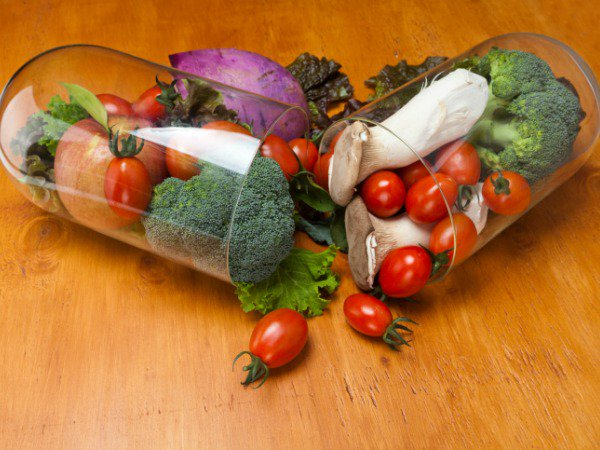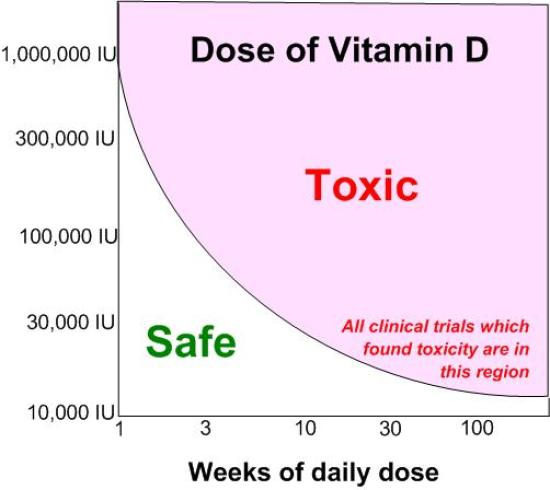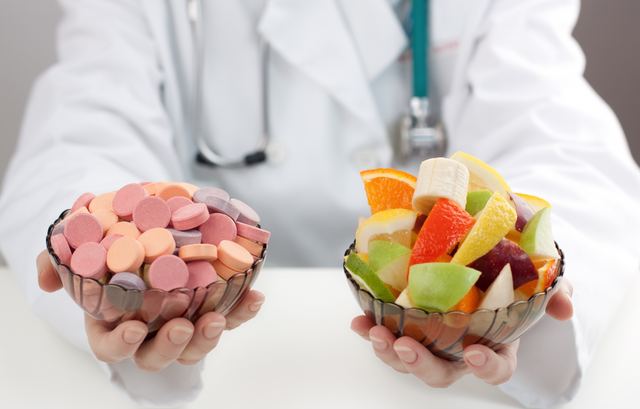Food and Vitamin supplements : The scientific View

The book "Vitamania" of the scientific journalist Katherine Price - an investigation about the industry of food additives, from vitamins to dietary supplements
Can I poison myself with vitamins? Can. In 1912, polar explorers Douglas Mawson and Xavier Merz were left alone on the coast of the Antarctic after their companion fell through a glacial crack with most of the group's supplies. Following the example of Amundsen, the polar explorers began to eat one after the other Husky dogs who were dragging their sleighs. Amundsen, this tactic helped to get to the pole, but the 31-year-old athlete Merz she killed, and Mawson had to recover for a long time after a serious illness. Only in the 1970s did doctors find out what was wrong: in the liver of a husky (as well as in the liver of a polar bear or seal), there is an abnormal amount of vitamin A. And in high doses it is fatal. "An important factoroid in case you are planning a polar expedition," the independent American scientific journalist Kathryn Price notes with sarcasm in her book Vitamania.

The same vitamin A could save half a million lives a year if orthodox green and convinced believers stopped fighting GMO. In the villages of sub-Saharan Africa, Price says, you can observe how, with the onset of dusk, children are divided into two groups. Some continue to play, others go home until morning. These second - "night blindness", niktalopiya, dysfunction of night vision. This is the first symptom of Vitamin A deficiency and large immunity problems: in such children, the mortality from diseases is three to six times higher, which in other circumstances would not even require a doctor's intervention. According to WHO estimates in 2005, in the third world, about 190 million children and 19 million pregnant women suffer from this, and 250,000-500,000 of them become blind: following the "blindness of the eyes", the cornea collapses, and the eye can literally flow out. (In a civilized world where the problem with vitamin A is not so acute, the process is slowed down at the stage of "dry eye syndrome." If you have a feeling of sand in your eyes - perhaps it's time for you to change the diet.)
In 2000, genetic engineers Ingo Potrikus from Switzerland and Peter Bayer from Germany came up with a solution - gold rice. In the DNA of ordinary white rice, one narcissus gene and one gene of the soil bacterium Erwinia uredovora were introduced: together they trigger the synthesis of beta-carotene, from which the vitamin A is produced in the human body. The grains eventually acquire a yellow-orange hue. In 2005, by another gene modification, the content of beta-carotene in rice was increased 23-fold - and it became enough that the standard portion cover the daily requirement for vitamin A. Is the problem solved? No matter how it is. The last time gold rice was mentioned in the New York Times in 2013: 400 men defeated an experimental plantation in the Philippines, and women went to a demonstration - our children, they said, not for your experiments.

Perhaps, there is no need for GMOs and it is necessary to give preference to healthy food - fruits and vegetables rich in vitamins? Price is compelled to upset us: the average American receives an overwhelming portion of vitamins not from lemons or mangoes, but from crackers, bread, juice or milk, where the vitamins are systematically added artificially. They are produced by chemical synthesis in factories, like pharmacy medicines or powder for a dishwasher. If all seven billion people suddenly decided to switch to "natural" sources of vitamins, vegetables and fruits, then the logistics and agriculture of the world could not cope with the request. And not only they: let's say, are you ready to eat half a kilo of carrots every day to get the necessary dose of the same beta-carotene?
In the very formulation of "rich in vitamins" laid down the understatement. Of all the 13 vitamins known to science, four - A, D, E, K - are soluble in fats, but insoluble in water. This means that when they - or their chemical precursors - get into the body with fruit juice, most of the substance remains unclaimed. In theory, one molecule of beta-carotene produces one molecule of vitamin A. In practice, if you ate mango or papaya, one molecule of 18 will enter into the desired reaction. Hence, the "vitamin content in the fruit" should be divided by 18 if you want find out how much it actually gets into the body. (But because of the solubility of vitamins in fats, notes Price, fried in oil vegetables can be unexpectedly more useful, whatever it says about the universal harm of roast.)
The very name of the book, glued together from the words "vitamin" and "mania", seems to hint at the fact that vitamins are not as good as we think about them. But the object of Price's attacks is not the vitamins themselves, but a whole set of practices - from the cultural to the political ones - that have become a side effect of the discovery of vitamins made over a hundred years ago.
Example? The industry of dietary supplements, bioactive additives, from isolated amino acids to extract from the heart of dried toad. Vitamins opened for them a legislative loophole for everyone. In 1938, after a scandal with a medicine based on a poisonous solvent, the Federal Service for Supervision of Consumer Goods (FDA), the FDA, the Food and Drug Administration, appeared in the United States. This agency introduced strict rules for drug manufacturers - it was required to conduct tests for health safety. For vitamins, as for obvious good, the law did not apply - and with them to other substances that are found in nature as food components. Thus, a class of unregulated "food additives" was born. After the tragedy of 1962 with thalidomide (the mothers who took this hypnotic, children with congenital malformations were born), the FDA clarified its requirements for medicines: now clinical trials in several stages had to prove both their effectiveness and their safety. "Food additives", of course, this again did not concern.
Does this mean that they are by definition harmless? In the 1980s, L-tryptophan, a naturally occurring amino acid found in a variety of proteins, triggered an epidemic of the disease, called eosinophilia-myalgia syndrome. It all began with spasms in the muscles and itching - and ended in paralysis and a wheelchair. After hearings in the US Congress, the Japanese manufacturing company paid the victims two billion dollars in compensation.

But the main problem is not so much harm from the drugs themselves, but harm from inaction. If you are treated with a useless substance from cancer, you irreversibly lose time, which could be spent on real treatment. However, by the time when lawmakers in the USA decided to get the manufacturers to bear at least some responsibility for asserting the miraculous power of some goji berries or leaves of ginkgo biloba in the healing of cancer and AIDS, the food supplements industry was already in the stand up for themselves - and put the heavyweight lobbyists.
Another effect of the "vitamin incidence" is the chemical terms in large print on the packages of products in the store, which denote the substances present in these products in negligible quantities - lycopene, resveratrol, flavonoids. Why does the content of gluten and omega-3-unsaturated acids excite people far from chemistry, more than, say, the question under which conditions the tomatoes ripened and whether the cow was fed with antibiotics? Price argues that the very idea of talking about food in the language of chemistry is the result of the shock that vitamins caused at the time of its debut. It turns out that the world has learned, there are substances that change the effect of food on the body in microdoses: the sailors are dying of scurvy with packs - but they are getting better right before their eyes.
Vitamins now are primarily an indulgence. Have eaten a ball of ascorbic acid - and you can afford a piece of fat pork: today you have already taken care of your health. This is known to the producers of harmful food, who will write on a pack of chips with tomatoes, that they contain vitamin C or B12, and it will be quite true: adding them to potato paste, from which the chips are stamped, is not so difficult. In today's world, where salt is iodized, and flour is fortified, it's not easy to get scurvy or beriberi. But taking multivitamins or dietary supplements instead of eating healthy food and being treated by doctors is, according to Price, "to be insured against earthquakes where the main danger is flood."

References for Text and Images:
- https://thecompleteherbalguide.com/entries/depression/7-herbs-natural-supplements-depression/
- https://www.vitamindwiki.com/Overview+Toxicity+of+vitamin+D
- http://www.eatright.org/resource/food/vitamins-and-supplements/dietary-supplements/supplements-and-safety
- https://www.mirror.co.uk/lifestyle/health/should-you-taking-food-supplements-7201425
- https://www.sciencenewsforstudents.org/article/food-supplements-can-make-you-sick
Support @steemstem and the #steemstem
project - curating and supporting quality STEM
related content on Steemit

I like this post.
Informative💙
Congratulations @chotho! You have completed some achievement on Steemit and have been rewarded with new badge(s) :
Click on any badge to view your own Board of Honor on SteemitBoard.
For more information about SteemitBoard, click here
If you no longer want to receive notifications, reply to this comment with the word
STOP